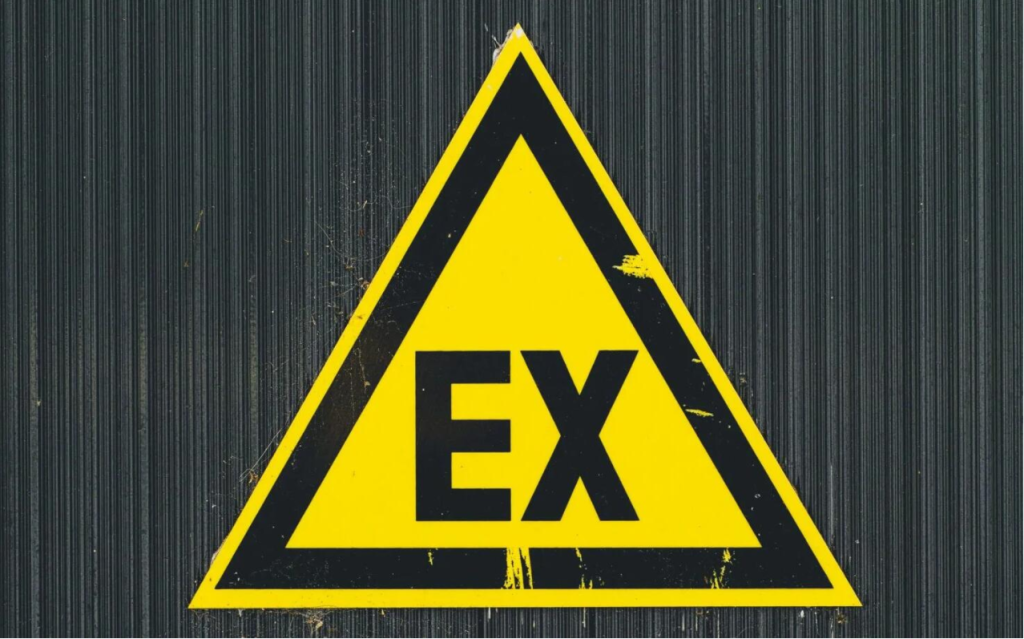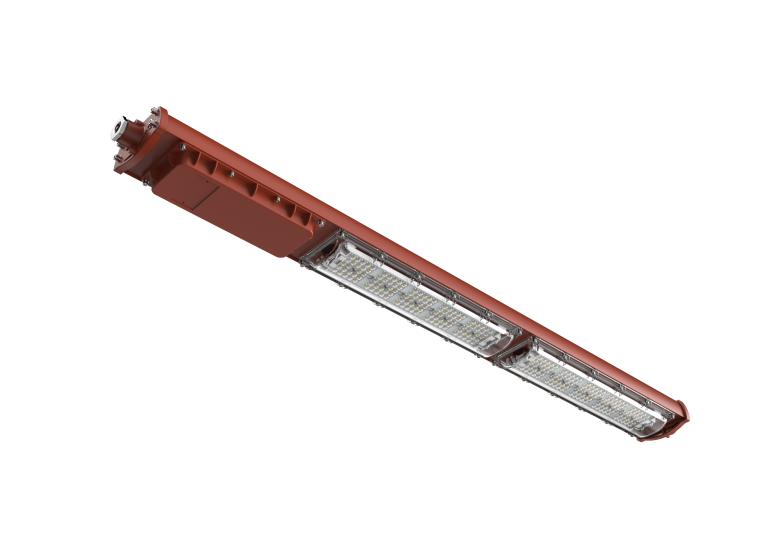What does Explosion Proof mean

our understanding of Explosion-Proof (Ex) in the world of intrinsically safe and Hazardous materials may be wrong. You see, for a regular person, Ex-Proof means it can withstand an ignition or a blast from an outside source. In other words, something similar to what the military uses today. However, there’s more to Ex-Proof and its definition than what many understand it to be
Table of Contents
What is Explosion-Proof?
In hazardous areas, Ex-Proof means it will contain any detonation originating within the housing and prevent sparks within the housing from igniting vapors, gases, dust, or fibers in the air surrounding it.
An “Explosion-Proof“ classified sensor/transmitter contains housing that has been engineered and constructed to suppress a flash or discharge. Ex-Proof housing contains either cast aluminum or stainless steel, with sufficient mass and strength to subdue ignition, should flammable substances penetrate the internal electronics. Additionally, the design prevents surface temperatures from exceeding levels that ignite the gases or vapors covered by its Group rating.
How does an explosion occur?
The “Combustion” or “Fire” Triangle classifies hazardous locations in the Ex-Proof industry. A source of fuel (explosive gases, liquids, or vapors), ignition (fire, spark, or explosion), and oxygen must be present in the appropriate consistencies for an explosion to occur. Our Explosion-Proof Enclosures & Systems operate to prevent these three criteria from mixing. Thus, the enclosure prevents hazards such as explosions from occurring and affecting the surrounding environment.
Fuel — are flammable or combustible materials and can be gases, liquids or solids.
Heat — are ignition sources that include open flames, lit cigarettes, and sparks (such as from electrical current and static electricity shorts). A chemical reaction that creates heat can also ignite a fuel and oxygen mixture.
Oxygen — The most common source of oxygen is air, but oxygen can also come from chemicals called oxidizers. For example, common oxidizers are types of chemicals such as chlorine, chlorine dioxide, potassium permanganate, and potassium chlorate.
What Is Explosion Proof Classification(UL)
Classes, groups, grades, and categories are all used to define usefulness across any industry. Industrial facilities also utilize divisions such as Explosion-Proof classification to denote the required safety within a hazardous environment. Understanding how to read Explosion-Proof classification will allow you to accurately assess your safety circumstances and comply with the safety regulations of your worksite.
Three factors classify a hazardous area.
Explosion-Proof Classes
There are three classes of hazardous areas that define the type of flammable substances present in the environment. And all class locations ascend from most hazardous gases (class I), dust (class II), to fibers (class III).
Class I
Flammable vapors and gases are or may be continuously present in the atmosphere in ample amounts that can ignite or explode. Additionally, any arcs, sparks, and sufficient thermal energy could ignite the gases into a potential explosion.
Furthermore, class I locations include refineries, oil storages, spraying booths, petroleum plants, fuel services.
Class II
Combustible dust is present in the air, enough to ignite a fire or explosion at the location. Thus, similar to class I, enough electrical and thermal energy can ignite the particles present at a work location.
Example Locations include granaries, candy manufacturers, and plastic manufacturers.
Class III
Incendiary fibers that may not suspend in the air are present around machinery. Unlike classes I and II, fibers include general fibers and substances that are not necessarily airborne. However, the material is flammable, and energy produced by machinery can ignite a fire.
Divisions
Hazardous locations are classified based on the probability of high concentrations of the dangerous substance being present under working circumstances–enough to react in combustion. Division 1 signifies a likely chance of hazardous substances being present in the atmosphere during normal work circumstances. Whereas, Division 2 represents a less likely chance of dangerous substances emerging in the air unless the system (machinery, human error, and more) fails. In other words, the first division is concerned with the constant circulation of hazardous substances in the air, and the second division is concerned with hazards that may escape
Groups
Lastly, groups correlate to specific substances present at the location. Specifically, the letters “A” through “G” connote the different groups of substances. Moreover, the letters correspond to their appropriate classification of gas and vapor, dust, and fibers (which do not appear).
Accordingly, each group below defines what substances a location will contain.
Class I Groups – Gases & Vapors
- A: specifies atmospheres containing acetylene
- B: hydrogen, butadiene, acrolein, ethylene oxide, propylene oxide, or other gases or vapors of equivalent hazard
- C: carbon monoxide, cyclopropane, ethyl ether, ethylene, hydrogen sulfide, or the equivalent
- D: acetone, alcohol, ammonia, benzene, benzol, butane, gasoline, hexane, lacquer solvent, naphtha, natural gas, propane, methane, vinyl chloride, or the equivalent
- Class II Groups – Dusts & Grains
- E: metals dust like aluminum and alloys
- F: carbon, charcoal, and coal dust clouds
- G: flour, grains, plastics
IDENTIFYING ZONE 0, ZONE 1, AND ZONE 2 HAZARDOUS AREAS(ATEX & IECEx )
A hazardous area can be defined as any location where there is risk of an explosion. But every hazardous area is different and each has specific requirements depending on the nature of the atmosphere and the elements that are present.
Fundamentally, for an explosion to take place, flammable or explosive gases, vapours, mists or dusts will be present. Then, the level of risk of an explosion is based on the frequency and duration of the occurrence of an explosive atmosphere. This level of risk is represented by classifying the hazardous area as Zone 0, Zone 1 or Zone 2 (for gas, vapour and mist atmospheres) or Zone 21 or Zone 22 for dust atmospheres.
we will look at what defines Zone 0, Zone 1 and Zone 2 hazardous area classifications and the considerations for specifying lighting into each area. But first, we must consider what is likely to cause an explosion in the first place.
There are three necessary components for an explosion to occur;
- Flammable Substance – this needs to be present in a relatively high quantity to produce an explosive mixture (e.g. gas, vapours, mists and dusts).
- Oxygen – oxygen is required in high quantities and in combination with the flammable substance to produce an explosive atmosphere.
3. Ignition Source – a spark or high heat must also be present.
Where there is potential for an explosive atmosphere, special precautions are needed to prevent fires and explosions. Electronic equipment, including lighting, needs to be purpose designed for use in hazardous areas to prevent a spark occurring and igniting any flammable substances.
Although every application is different, for the ease of monitoring and specification each hazardous area is classified as a particular level or “zone”. As a result, all hazardous area equipment must be designed with hazardous area zone classifications in mind, as the “zone” governs the level of protection and precaution required. It is essential to know which zone you are working in, so that you can specify the most appropriate equipment.
For gases, vapours and mists the zone classifications are recognised as Zone 0, Zone 1 and Zone 2 areas. Let’s take a look at what defines each zone…
- Zone 0 is an area in which an explosive atmosphere is present continuously for long periods of time or will frequently occur.
- Zone 1 is an area in which an explosive atmosphere is likely to occur occasionally in normal operation. It may exist because of repair, maintenance operations, or leakage.
- Zone 2 is a place in which an explosive atmosphere is not likely to occur in normal operation but, if it does occur, will persist for a short period only. These areas only become hazardous in case of an accident or some unusual operating condition.

